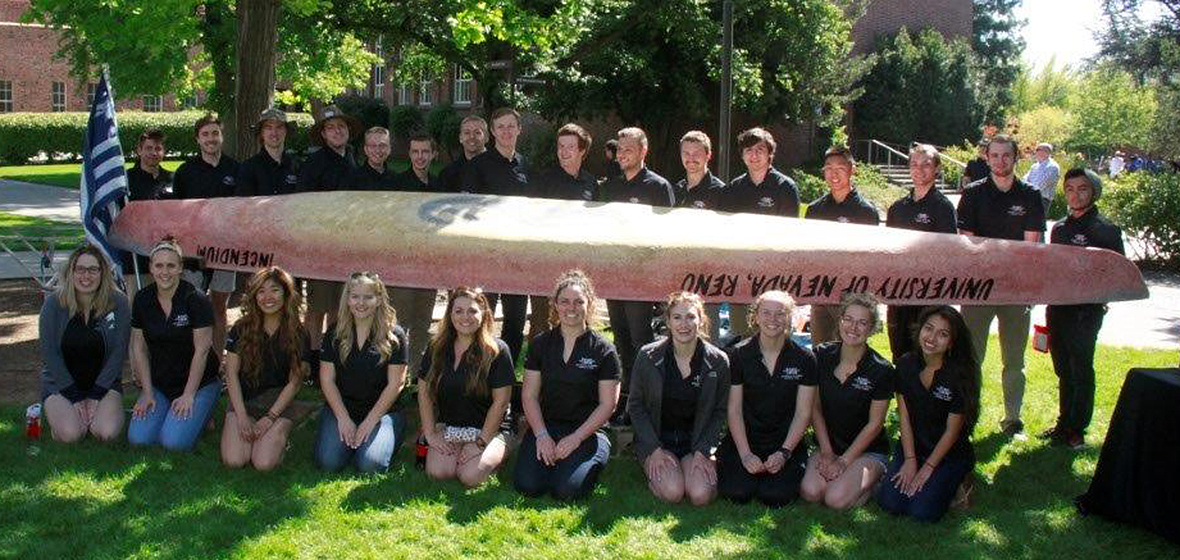Engineering students from the University of Nevada, Reno won all the concrete canoe races at the 2017 Mid Pacific Regional Conference April 20-22 at California State University, Chico. An exceptionally impressive feat after their canoe was ruptured during preparation a few weeks before the annual competition.
The team came together to work long hours to repair their damaged canoe, ultimately sweeping the races. They finished in first place in all the race events: women's endurance, men's endurance, women's sprint, men's sprint, and coed sprint. The canoe team received second place in the technical paper portion and third place for in the presentation portion, earning third place overall in the regional concrete canoe competition.
"The team is very disappointed that they will not be going to nationals for the first time in many years, but will use this as motivation for the coming year," Kyle Castle, ASCE president said. "They deserve to hold to their heads high, as they have more than represented the dedication, sportsmanship, and outstanding qualities of UNR students."
"These students do an amazing job of positively representing our college, department and community," David Sanders, professor of engineering and the team's faculty advisor, said. "They would not be able to do this outstanding work without the support of the University community."
Although the mid-pac conference tends to focus on the concrete canoe competition, there are other important aspects in which the engineering students did well this year. The water treatment competition team had one of the best environmental water-filter build times of all contestants and were able to achieve one of the highest levels of water quality. The steel bridge team had a major victory in successfully passing all challenges, including assembly and loading, with a 2,500-pound load. The Mead Paper presentation, written by Alicia Robb, received second place. According to Castle, the judges said the choice between first and second was one of the closest they have ever had to make.
This year's competing teams included California State University, Chico; California State University, Fresno; California State University, Humboldt; California State University, Sacramento; California State University, San Francisco; California State University, San Jose; University of California, Berkeley; University of California, Davis; University of the Pacific; University of Nevada, Reno; Université Laval; HoHai University; Tongji University; and Zhejiang University.
Rules and regulations for the competition, including the concrete canoe design, are released by the American Society of Civil Engineers in September each year, and teams begin to immediately design and analyze the construction of their canoes. Typically the canoe is cast in December, to spend the following month curing. Then it is released from its form and the next three months are spent sanding, staining and sealing until the craft is ready for testing and practice before the Mid-Pac in April. Overall the process is estimated to take a team of 20 students about 4,000 hours to complete.











